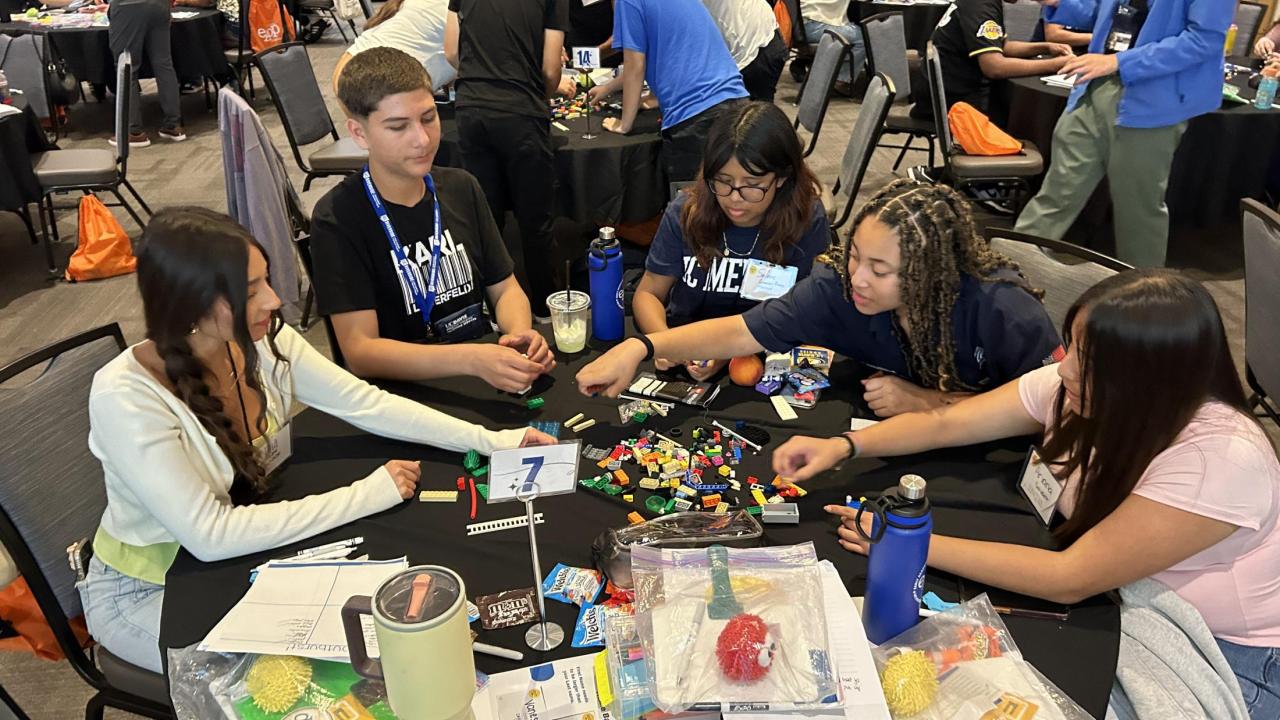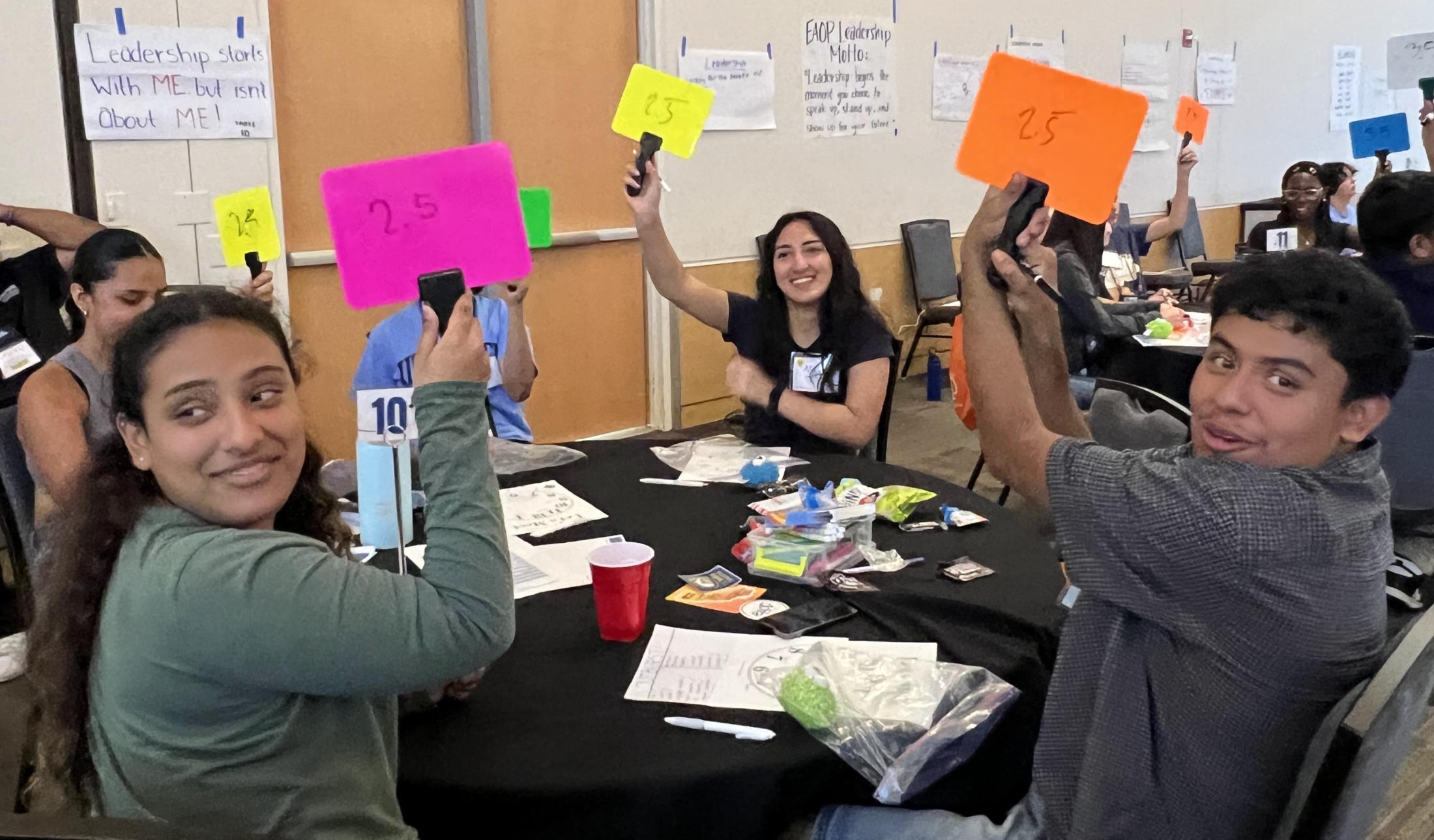
A path to lead
Youth step into leadership at UC Davis-hosted conference
Goal-setting sessions, team challenges and a packed agenda set the tone for the first statewide Early Academic Outreach Program, or EAOP, Youth Leadership Conference — an event with all the structure and strategy of a professional summit, built entirely for California teens.
UC Davis EAOP hosted the first-ever three-day overnight event July 28–30 for over 100 rising high school sophomores, juniors and seniors from seven UC EAOP programs across the state. Between leadership sessions, students bowled in the Memorial Union Games Area, experienced dorm life and explored campus during a late-night scavenger hunt.

Each year, EAOP, the University of California’s largest academic preparation program, helps hundreds of thousands of California students and families at under-served schools access college knowledge tools and information. Rogelio Villagrana, director of UC Davis EAOP, said he designed the conference to fill a gap in EAOP’s college preparation model and introduce high schoolers to intentional, early leadership development.
“This conference was 10 years in the making,” Villagrana said. “I wanted students to experience the kind of leadership training I didn’t encounter until adulthood.
Engaged by design
Students began the week with relationship-building and team challenges, then shifted toward concrete skill lessons. One problem-solving session asked teams to create as many rectangles as possible from irregular geometric pieces in five minutes — a fast-paced exercise in collaboration and strategy.
Monica Peña-Villegas, associate director of UC Davis EAOP, recalled how one student connected the puzzle to real life.
“They said the shapes felt awkward, even impossible to connect, at first,” Peña-Villegas said. “But when their team came together, they were able to create many rectangles. That’s what life feels like sometimes, different scenarios get thrown at you and things don’t fit until you take the time to figure them out.”
Later, on the second day of the conference, students practiced professional networking through a role-playing exercise. Each student created a mock professional identity — complete with job title, responsibilities and career aspirations — then introduced themselves to their peers and explored ways to collaborate as business professionals. Two students used their actual jobs — a Starbucks barista and a restaurant server — and discussed how they could better serve their customers.
Villagrana modeled the activity with a set of questions he uses at conferences to spark meaningful connections. One student turned the tables on him.

“She walked up to me, looked me in the eye and asked, ‘What do you love about what you do?’” Villagrana said. “Then she asked for my business card, just like I’d encouraged them to do. She put the exercise into practice right away.”
Leadership in action
Students presented their action plans to round out the conference — real proposals to improve their communities or something in their personal life. Students pitched plans to add AP courses in their schools, improve street safety with more stop signs and other real problems they faced daily.
Some teams volunteered peers to share their plans with the full group. Others hesitated. One team initially declined until Peña-Villegas encouraged them to present as a group.
“They talked about how electronics interfere with their ability to make real connections and network,” Peña-Villegas said. “We would have missed their perspective entirely if they declined to speak. We created a safe space, gave them a little push and wonderful things happened.”
Visit eaop.ucdavis.edu to see upcoming events, resources or information on services provided.
